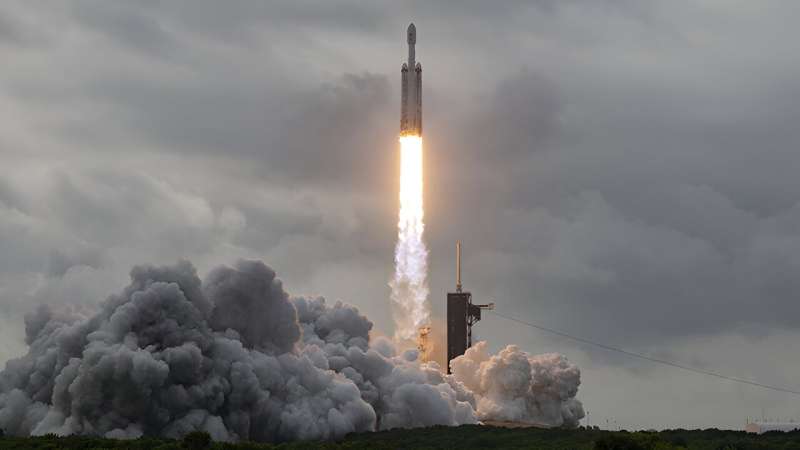In a post-launch test, the LLNL gamma-ray sensor was found to have a resolution of 2.1 kilo electron volts, about 2 ½ times better than the 5-kilo electron volt resolution gamma-ray sensor LLNL built for a mission to Mercury in 2004.
"With the higher resolution gamma ray sensor, it equates to much better sensitivity and a much better ability to identify elements on the surface of Psyche," said LLNL physicist Morgan Burks, who heads the Lab team that developed the sensor.
"We were very excited to achieve our high resolution in the laboratory, but the real accomplishment has been maintaining that resolution through launch and the rigors of space flight."
The Psyche spacecraft is now in the eighth month of a two-billion-mile, nearly six-year journey through space to explore the rare, largely metal asteroid. It is traveling at 17.7 kilometers per second or about 40,000 miles per hour. To date, the spacecraft has traveled about 245 million miles from Earth.
"Psyche is scientifically interesting because it is thought to be a planetary core, a remnant of a collision during the early stages of the development of the solar system," Burks said. "We believe that exploration of the Psyche asteroid could increase our understanding of the hidden cores of Earth, Mars, Mercury and Venus."
The Psyche mission is led by Arizona State University (ASU). Psyche mission principal investigator Lindy Elkins-Tanton of ASU said that the exploration of Psyche will permit scientists to "literally visit a planetary core—the only way humankind ever can."
Lab scientists worked with collaborators from the JHAPL to combine the Lab HPGe gamma-ray sensor into the GRS and integrate it with additional components for the spaceflight mission.
The LLNL instrument is the second HPGe gamma-ray sensor designed and built by LLNL for space exploration within the past 20 years. Two more such sensors are now being designed and built by LLNL researchers for future space exploration missions.
"In collaboration with Johns Hopkins APL, we've become the world experts in gamma-ray spectroscopy for planetary science," Burks said. "We are helping to open up a new era in nuclear spectroscopy for space applications."
In 2004, NASA's MESSENGER (short for MErcury, Surface Space Environment, Geochemistry and Ranging) spacecraft, also built and operated at Johns Hopkins APL, was launched toward Mercury with a suite of seven instruments, including an LLNL-developed HPGe gamma-ray sensor.
"We learned a lot from our mission to Mercury. Based on what we learned, we were able to make several electrical and mechanical upgrades to improve the instrument's resolution," Burks said.
"There's a strong synergy between the gamma ray-sensors we build for space applications and the ones we build for terrestrial uses. We expect this work to lead to a new generation of instruments that can be used on Earth for homeland security applications."
The Psyche gamma-ray sensor is the fourth generation of high-purity, germanium-based gamma ray-sensors, following the Cryo-3, the MESSENGER and the GeMini.
Provided by Lawrence Livermore National Laboratory



